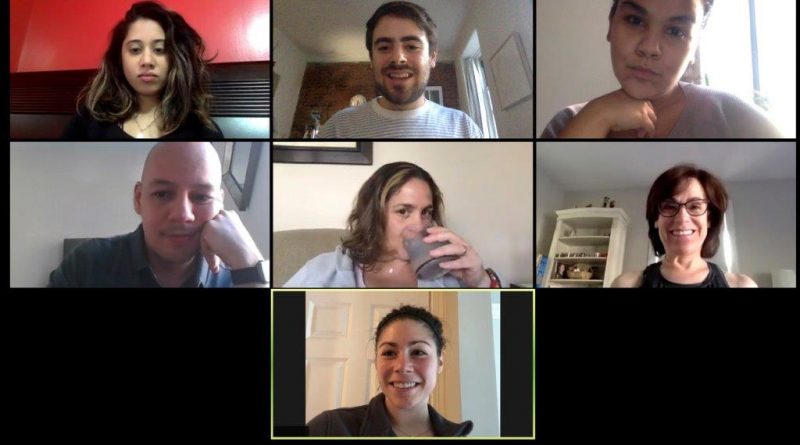“Stay in touch as much as possible”
Remote coaching
Companies have switched to telework en masse over the past few months. According to the Social and Economic Council of Flanders (SERV), barely 11% of employees teleworked one day a week prior to the coronavirus crisis. The SERV does not yet have any figures for the current year, but reports in the media suggest that, in some sectors, up to 75% of employees worked from home at the height of the health crisis. And telework became a lot more intensive, as people worked from home more than just one day a week.
The exact extent of the increase will become clear once the situation has stabilised. But there has no doubt been a significant and permanent increase in the use of telework. This situation presents team coaches with a new challenge: how to coach a team without or with hardly any physical contact?
 Jeroen Lebotte has built up quite some experience in remote coaching over the years. At Telenet, he leads a team of about 30 internal and external employees responsible for the installation and maintenance of approximately fifty large and small data centres in Belgium and Luxembourg. They also carry out work on fibre-optic networks for major customers. “I have been remote coaching for a long time,” he explains, “but this extent is also new to me. I used to see my co-workers on a weekly basis, now once a month at the most. Coaching has become an even greater challenge as a result.”
Jeroen Lebotte has built up quite some experience in remote coaching over the years. At Telenet, he leads a team of about 30 internal and external employees responsible for the installation and maintenance of approximately fifty large and small data centres in Belgium and Luxembourg. They also carry out work on fibre-optic networks for major customers. “I have been remote coaching for a long time,” he explains, “but this extent is also new to me. I used to see my co-workers on a weekly basis, now once a month at the most. Coaching has become an even greater challenge as a result.”
Informal contact
What is the main difference with an office-based team?
Lebotte: The coffee breaks or informal contacts which inform you about how your team is doing, what their concerns are, what is going well and what is not. Face-to-face contact is always the strongest form of interaction. Prior to covid-19, I used to experience this when making phone calls in my car on the way home. These informal phone calls with my colleagues often revealed issues that would have remained undetected if there had only been formal consultations. Unfortunately, I no longer commute by car. Of course, I can still phone my colleagues, but the calls during the ride home were the conclusion of my working day.
What have you learnt from the coronavirus crisis?
Lebotte: I have learnt to take into account the circumstances in which people work. I do not have children myself and I like starting the day early, so a meeting at 8 a.m. is fine for me. However, as this usually is peak hour for my co-workers, it is better to leave them alone and move that meeting to 9 a.m.
What do you think the future holds for telework?
Lebotte: I suppose the current extent of telework will be reduced a bit. On the other hand, the office concept is 100 years old, so an update is really in order. Offices remain useful for creative work, as a place where people can come together to look for innovative solutions or brainstorm. I am convinced that office work will become more high-quality, while everyday tasks will be performed from home. I am pleased that major companies such as Telenet set the example in this respect.
Trust
How do you keep a check on your team members and their performances?
Lebotte: I don’t really like the word ‘check’. It all revolves around trust. If someone is systematically cutting corners , it will always come out in the end. But what matters to me is output. If you coach and motivate your team members adequately, they will not just achieve their objectives but go the extra mile as well. So checking the number of hours worked really is a thing of the past, as far as I’m concerned. Telework requires more from employees, so it is fair to allow some flexibility in exchange. Over the past few months, the required output has been delivered, even at times when things were very busy due to covid-19.
Do you have any other tips for colleagues who now have to provide remote coaching?
Lebotte: Stay in touch as much as possible! Organise short meetings or even coffee calls more often to maintain contact. Otherwise, the baggage of frustration will only grow. It is better to address this baggage right away than allow frustrations to accumulate. Digital meetings can sometimes feel a bit strange, but the more frequently you hold them, the more successful they are. It sharpens your senses, which is not a luxury since the visual aspect is mostly lost. Even if you use a camera during meetings, you miss a lot of visual information.
Also allow for breaks in between meetings. Digital meetings are more intense, so ten minutes between two meetings enables you to have a coffee or stretch your legs, like you used to do when walking from one meeting to the next.

